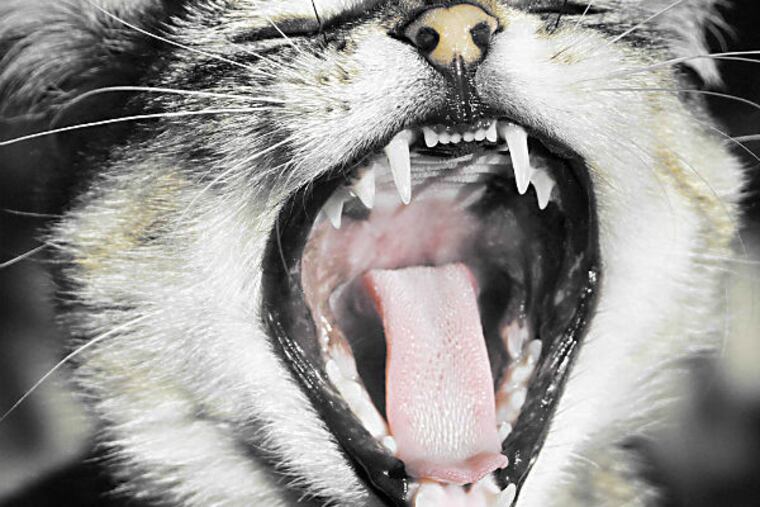The mouth that roared
A couple of years ago, I had a pet owner bring in an adult cat because it was meowing differently.

A COUPLE OF years ago, I had a pet owner bring in an adult cat because it was meowing differently. That's not much to go on, but I did a complete physical exam and found nothing. Subsequent blood work also came back normal. I suggested that we keep the cat and do medical rounds with the rest of the staff.
We decided to start at the tip of the cat's nose and proceed with another detailed exam. This time, I took a pair of hemostats and gently tapped the cat's teeth, starting in the front.
When I got to the cat's left upper fang and barely touched it, the cat just about shot up into orbit. We did digital dental radiographs and saw that the root of the tooth was abscessed. After we surgically removed the infected tooth, the cat acted as if it had been relieved of incredible pain.
Oral problems in dogs and cats aren't always visible at first glance. Pets don't have any way of telling us that something is wrong, and it's natural for them to hide signs of weakness or pain so they don't become targets of predators. It's up to us as owners and veterinarians to be aware of changes in behavior that could signal pain or illness. Here are some obvious and not-so-obvious signs that your cat or dog has a painful mouth:
* Inflamed gums or tartar buildup on the teeth. Your pet may have gingivitis - inflammation of the gums - or periodontal disease. Left untreated, gingivitis progresses to periodontal disease, which causes teeth to become infected and loose.
* Bad breath or a bad smell in the mouth area. Repeat after me: It's not normal for pets to have bad breath or any other bad odors. In the mouth area, it can signal dental disease or an infection of the lip folds in heavy-lipped breeds such as basset hounds, cocker spaniels or Saint Bernards. Bad breath can also be associated with kidney disease.
* Drooling. This is another sign of periodontal disease, as well as of mouth infections and foreign bodies, such as splinters or burrs stuck in the mouth. Bad breath and drooling can also be signs of oral cancer.
* Change in eating habits. If your dog or cat is reluctant to eat or picks up pieces of food and then drops them, there's a good chance that his mouth hurts. He may have a broken tooth or a sore mouth from a type of inflammation called stomatitis.
* Swelling. A tooth with an abscessed root is filled with pus that can cause swelling beneath the eye or a nasty condition called an oral-nasal fistula, which occurs when an abscessed tooth breaks into the nasal cavity, allowing food and water to move from the mouth into the nose and come back out through the nose. Yuck!
Don't let your dog or cat get down in the mouth! Examine his mouth monthly for signs of problems, such as redness, loose teeth and painful areas. You may need to put your money where his mouth is to avoid future problems.